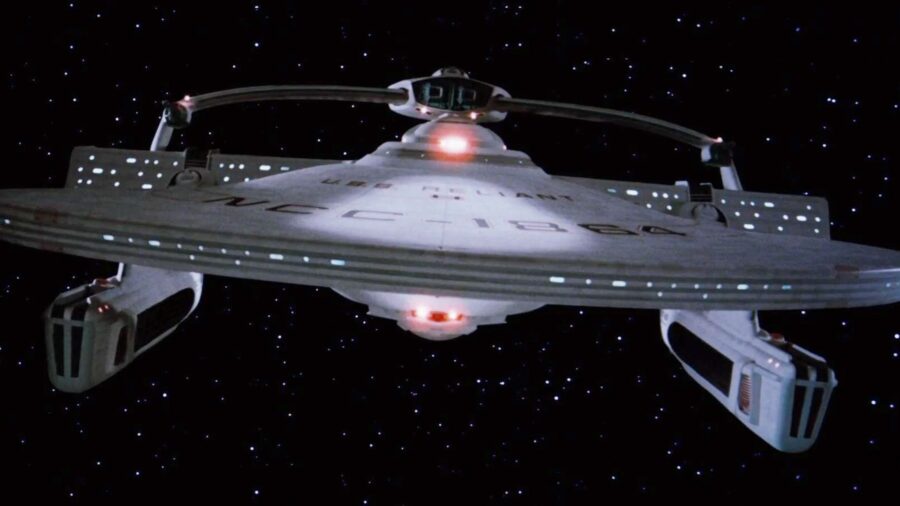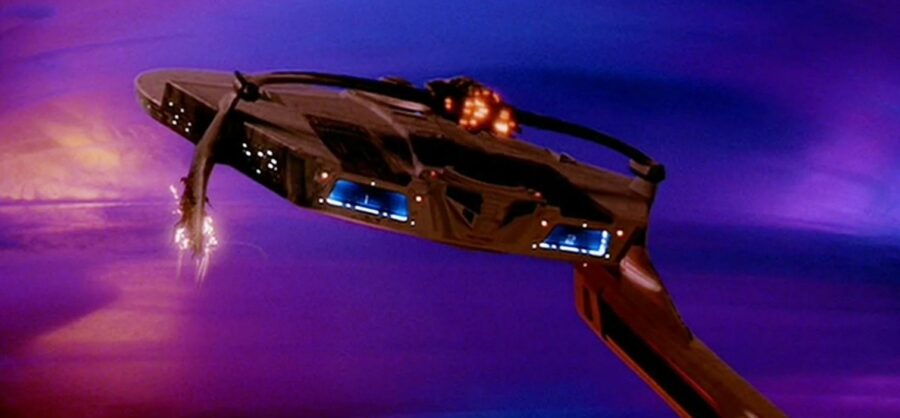One Of Star Trek’s Most Famous Ships Is Always Shown Upside Down
Star Trek II: The Wrath of Khan's Defiant was accidentally approved upside-down from the original design, forever altering all Miranda-class ships that used the same template.

Star Trek is an iconic franchise known for its epic battles and distinct approach to space travel and starship design, with the USS Enterprise being one of the most iconic spaceships of all time. Unknown to viewers, sometimes those designs came to fruition in roundabout ways. According to an article from StarTrek.com, one of the iconic starships in the show’s fleet, the Reliant, is a reversed version of its original design.
Production designer Joseph Jennings notes that the ship had to look noticeably different from the Enterprise: “In the dogfight you had to instantly recognize which ship you were looking at, so they had to look different.”
Graphic designer Lee Cole recalls what happened when the crew mailed over their design to Star Trek II: Wrath of Khan film producer Harve Bennett for final approval: “so we did our first sketch of the ship and mailed them off to him,” Cole notes, remembering that Bennett had to sign the bottom of the sheet. Cole continues, “When he got it in the mail he took it out of the package upside down, I guess, and wrote out on the bottom, ‘Yes, this looks very good, proceed.’ So when we got it back we realized he’d approved it upside down.”
The Reliant was introduced in Star Trek II: The Wrath of Khan. It was the first new starship introduced since the Klingon battle cruiser, and the design was initially very similar to the Enterprise. This presented a problem down the line, specifically during the battle scene in the Mutara Nebula.
The team devised a solution, leaving the circular saucer, which denoted that it was part of the Starfleet navy and kept the engines intact. They then got rid of the engineering hull and placed the nacelles over the saucer section. And yet, as viewers may recognize, the final model for the ship is the opposite of this description, with Bennett’s fateful decision altering the model’s appearance and Star Trek canon moving forward.
The Star Trek design team decided to make it work upside down instead of reapproaching Bennett, who was abroad at the time. They added a “roll bar” and phaser banks, transforming what was initially a rather docile ship into an offensive powerhouse. Many later models of Miranda class ships would use this model and modifications of it as a template moving forward.

The Star Trek franchise is one of the longest-running science fiction franchises in the world and has certainly influenced a great deal of science fiction cinema and television. Star Trek: The Original Series aired in September 1966 and ran for three seasons on NBC. It followed the adventures of James T. Kirk (William Shatner), his lieutenant Spock (Leonard Nemoy), and the crew of the USS Enterprise as they explored deep space.
Star Trek II: The Wrath of Khan is the second film of the Star Trek franchise after 1979’s Star Trek: The Motion Picture, but is widely considered the best film in the series. Released in 1982, it began a three-part saga in tandem with subsequent films 1984’s Star Trek III: The Search for Spock and 1986’s Star Trek IV: The Voyage Home. The film used several models and computer graphics for its special effects and is credited as the first feature film to utilize a sequence fully generated by computer graphics.
Although many designs are meticulously planned out, revised, and drafted various times, sometimes the best designs are made unique by an element of surprise in the design process. This was certainly the case with the Miranda’s design, and many Star Trek fans couldn’t imagine the ship and subsequent models based on it appearing any other way.










